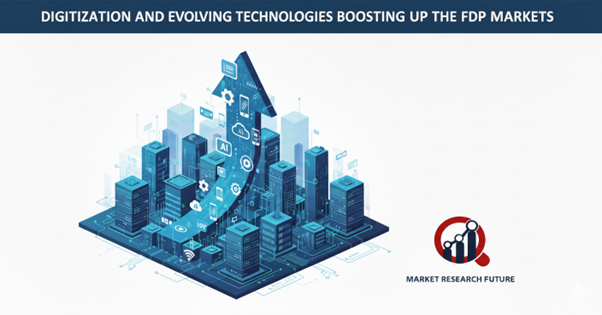
Fraud Detection and Prevention Market Overview
As digital transformation becomes more common, businesses are more likely to fall for new and more advanced types of fraud. Fraud Detection and Prevention (FDP) solutions have become important tools for protecting businesses from losing money and hurting their reputations. These systems use cutting-edge identification and authentication technologies to find possible fraud, which lets businesses look into strange behavior and data patterns as they happen.
The FDP market is growing because there is a growing need to protect real transactions and reduce losses caused by fraud. Modern FDP solutions now use technologies like big data analytics, predictive modeling, deep learning, cloud computing, and artificial intelligence (AI) to work in digital ecosystems. These new ideas have changed the way businesses find and deal with risks, which keeps them one step ahead of cybercriminals. Also, the rise of online and mobile banking services, along with the rise of real-time digital transactions, has made it more important than ever to find fraud. Governments, banks, and businesses are all using FDP tools to improve compliance, strengthen internal controls, and build trust among users.
Fraud today goes beyond just financial scams. It includes money laundering, cyber threats, tax evasion, identity theft, fake insurance claims, forged documents, and even funding terrorism. These threats affect a lot of different fields, including banking, healthcare, insurance, and the public sector. To keep up with fraudsters who are getting smarter, companies are using dynamic fraud detection technologies that combine real-time monitoring, behavioral analytics, machine learning (ML), and AI-driven risk modeling. These solutions can change to deal with new types of fraud, which makes them more accurate and efficient all the time.
The rise of connected devices has also been a big part of how the market has changed. The Internet of Things (IoT) has made billions of systems work together, from smartphones and smartwatches to home appliances. All of these systems collect and send private information. These devices make things easier, but they also give hackers more chances to take advantage of weaknesses. Businesses have seen new types of fraud, such as phishing attacks, ATM scams, identity theft, and false advertising schemes. The quick move to digital operations during global disruptions made companies even more vulnerable to cyberattacks, which is why they put fraud analytics and advanced fraud management systems at the top of their lists of priorities.
As online shopping has grown, the need for strong fraud prevention plans has grown as well. Every day, a lot of sensitive information is shared online because business-to-consumer (B2C), business-to-business (B2B), and consumer-to-consumer (C2C) transactions are all on the rise. This includes information about your identity, payment information, and personal records, all of which could be used against you. Cybercriminals use advanced methods to trick both people and businesses on social media and mobile gaming sites, which has made digital fraud even more complicated. Fraud is getting more complicated as more people use the internet, which makes it even more important to have advanced FDP solutions.
To make the digital world stronger and help with safe digital transformation, FDP vendors are focusing on these key strategies:
Continuous User Authentication: Companies are putting money into systems that use behavioral patterns and device intelligence to constantly check users' identities. This keeps things safe without getting in the way of the user experience.
Collaborative Development: Industry leaders are working with API developers and data privacy experts to create security frameworks that meet global standards and work well with all digital ecosystems.
Behavioral Biometrics: This new method uses AI and ML to look at how each user behaves, like how they type, move their mouse, or navigate, to find problems in real time. This cuts down on false positives and makes the system more accurate.
Even though technology has come a long way, the lack of skilled workers is still a big problem. A lot of companies have trouble finding security experts who can look at complicated fraud schemes or deal with cyber threats in a smart way. To keep this market growing, it's important to build a skilled workforce that can understand data patterns, risk management, and AI-driven security tools.
In conclusion
Fraud is now more dynamic and difficult than ever because of the digital age. As businesses use online platforms and digital banking more, they also need to make security and openness a top priority. Fraud detection and prevention are now necessary to keep customers happy, follow the rules, and make sure the business lasts for a long time.
Artificial intelligence, machine learning, and adaptive analytics are the future of FDP. Together, they can find strange activities, guess where fraud might happen, and lower risks in real time. Organizations can make a strong digital ecosystem by combining these technologies with human knowledge and ethical governance. This ecosystem will not only protect against fraud, but it will also encourage innovation, trust, and growth in a world that is becoming more connected.